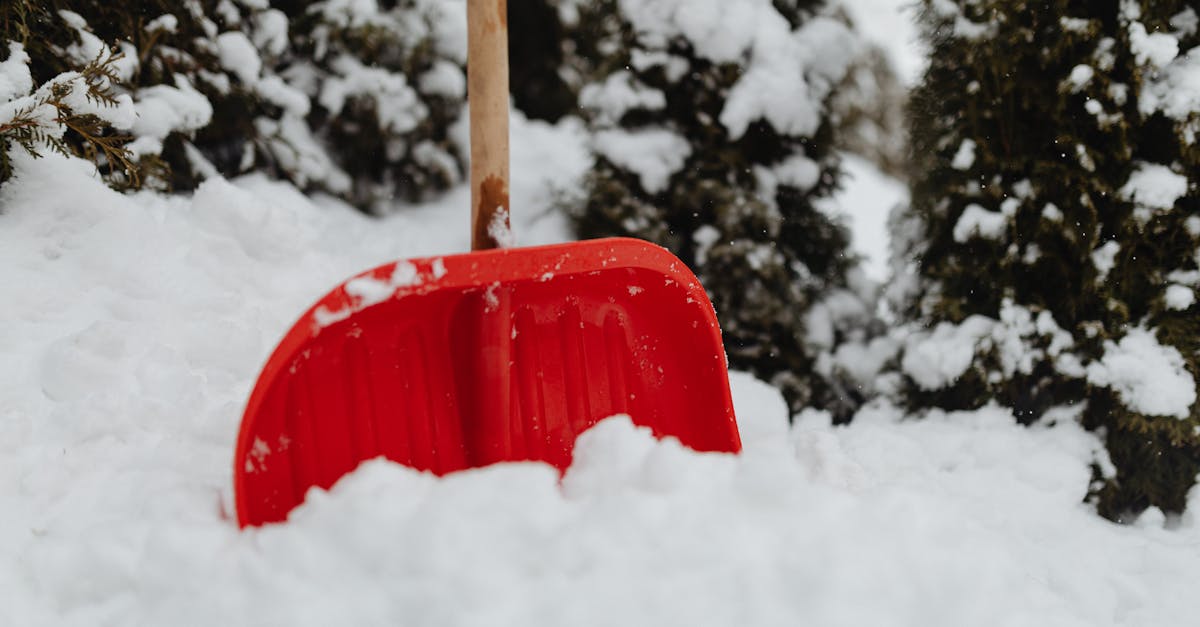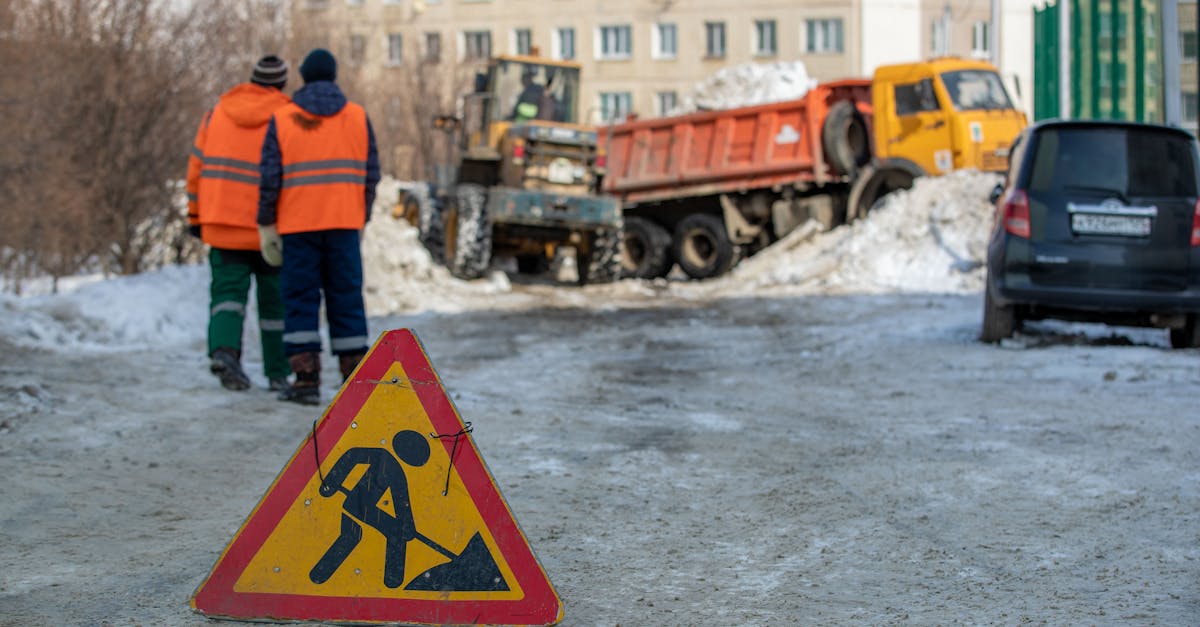
Table Of Contents
How to Handle Heavy Snow
When faced with heavy snowfall, timely and effective snow removal from driveways becomes crucial. Accumulations can quickly turn into compacted ice, making it more challenging to clear later. Breaking the task into manageable sections allows for easier lifting and prevents unnecessary strain on the back. It's advisable to use a sturdy shovel designed for snow; ergonomic designs help reduce fatigue during extended periods of shoveling.
Prioritizing safety while shoveling heavy snow is essential. Wear thermal clothing to stay warm and ensure proper footwear to prevent slips. Keeping a steady pace is important to avoid exhaustion. Additionally, considering the direction of the wind can help when determining where to aim the snow. Proper technique not only enhances efficiency but also safeguards one's health during snow removal from driveways.
Strategies for Lifting and Moving Snow
When tackling the task of snow removal from driveways, proper lifting techniques can prevent injury and make the job easier. Start by standing with your feet shoulder-width apart for stability. Bend at the hips and knees rather than the back when picking up snow. Use your legs to lift the load instead of relying solely on your back. This minimizes strain and allows for a more controlled movement while throwing the snow. Holding the shovel close to your body can also enhance balance and leverage during the process.
For moving snow effectively, break the task into manageable sections. Rather than attempting to clear large areas all at once, focus on smaller portions to keep fatigue at bay. A methodical approach helps maintain a steady rhythm and reduces the risk of overexertion. If the snow is particularly heavy, consider using a larger shovel to transport more snow at once, but be mindful not to overload it. The aim is to make snow removal from driveways safe and efficient while achieving a clear surface quickly.
Environmental Considerations
Snow removal from driveways can have various environmental impacts that homeowners should consider. Displaced snow may contain pollutants from the road, such as oil and salt, which can harm local vegetation and wildlife when it melts. Additionally, large piles of snow can block sunlight from reaching grass and plants, potentially causing them harm during the thawing season. The way snow is handled may not only influence immediate surroundings but also contribute to broader environmental issues, such as runoff pollution.
It’s also important to think about the implications of using shovels versus machines. Manual snow removal methods like shoveling tend to be quieter and have a smaller carbon footprint compared to gas-powered snow blowers. However, heavy snow can lead to increased strain on the body, which raises concerns around physical exertion and safety. Weighing these factors can help you make an informed decision about snow removal from driveways while also considering your overall environmental impact.
Impact of Snow Removal on Your Yard
Snow removal from driveways can significantly impact the surrounding yard. When snow is cleared, it can lead to soil erosion and compaction in areas where it has been piled. This process disrupts the natural drainage patterns and can hinder grass and plant growth in the spring. Over time, repeated snow removal may lead to uneven surfaces in your yard, creating an aesthetic disruption and altering the natural landscape.
Additionally, the chemicals used for de-icing can affect the health of nearby vegetation. Salt and other treatments meant to prevent ice accumulation can seep into the soil, potentially causing toxicity to plants and altering their growth. Homeowners should consider these effects when deciding how to approach snow removal from driveways. Choosing methods that minimize disruption can help preserve the integrity of your yard while keeping it safe and functional during winter months.
Alternatives to Shoveling
For those looking to avoid the physical strain of shoveling, snow blowers present a practical alternative. These machines can quickly clear driveways of heavy snow with minimal effort. The variable cutting widths of snow blowers allow for flexibility depending on the amount of snow on your driveway. They also can manage different surfaces effectively, ensuring that your driveway remains clear.
Another option for snow removal from driveways is hiring professional services. This choice alleviates the burden of lifting and moving heavy snow, especially during significant snowfalls. Professional snow removal teams often come equipped with larger machinery, capable of handling bigger accumulations of snow swiftly. This convenience can save homeowners time and reduce the physical demands of winter maintenance.
Snow Blowers and Other Options
Snow blowers provide a practical alternative to traditional shoveling for snow removal from driveways. These machines can significantly speed up the process, helping to clear large amounts of snow with minimal physical effort. Electric and gas-powered options are available, allowing homeowners to choose a model that suits their needs and preferences. Using a snow blower not only saves time but also reduces the risk of injury associated with manual shoveling.
In addition to snow blowers, other tools and equipment can assist with snow management. For those looking for a more hands-free solution, a snow plow attachment for an ATV or lawn tractor can be effective for larger driveways. Additionally, some homeowners might consider hiring professional snow removal services, which can eliminate the hassle altogether. Each option presents its own advantages and can be tailored to individual situations and snow accumulation levels.
FAQS
Why should I shovel snow off my driveway?
Shoveling snow off your driveway can prevent ice formation, improve safety by reducing slip hazards, and make it easier for you and others to access your property.
What is the best time to shovel snow?
It's best to shovel snow shortly after it falls, especially if heavy snowfall is expected. This helps prevent the snow from compacting and turning into ice, making it easier to remove.
Are there any health risks associated with shoveling snow?
Yes, shoveling snow can pose health risks, particularly for individuals with heart conditions or back problems. It's important to take breaks, stay hydrated, and use proper lifting techniques to minimize strain.
What tools can I use to shovel snow effectively?
The most common tools for shoveling snow include a traditional snow shovel, a snow pusher, and a snow scoop. Ergonomic shovels can also help reduce strain on your back.
Are there alternatives to shoveling snow?
Yes, alternatives include using a snow blower, hiring a snow removal service, or applying salt or sand to improve traction on icy surfaces, which can reduce the need for shoveling.
